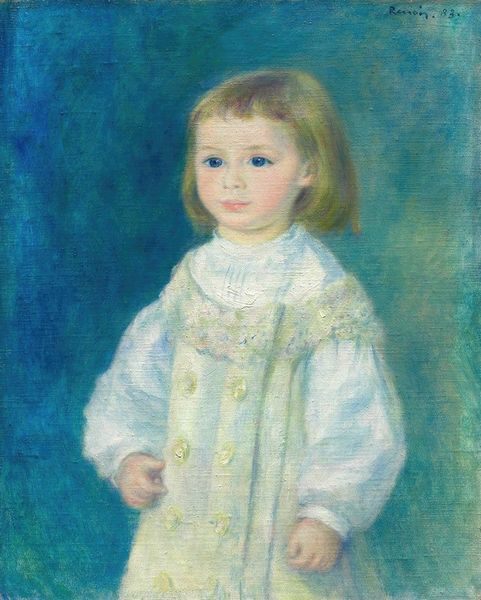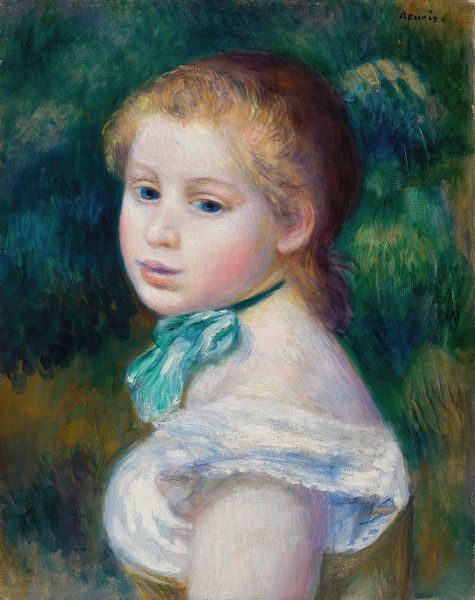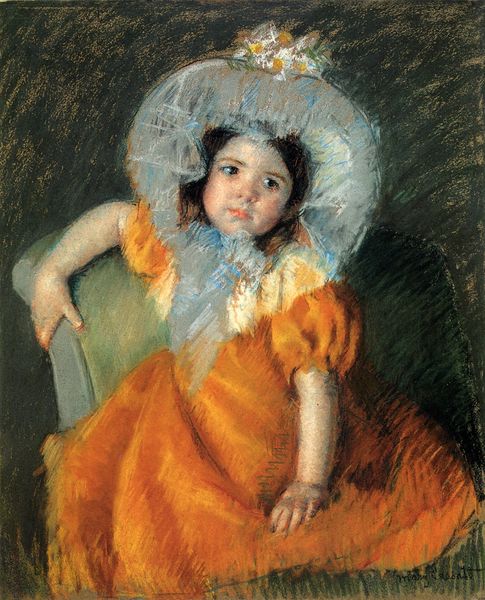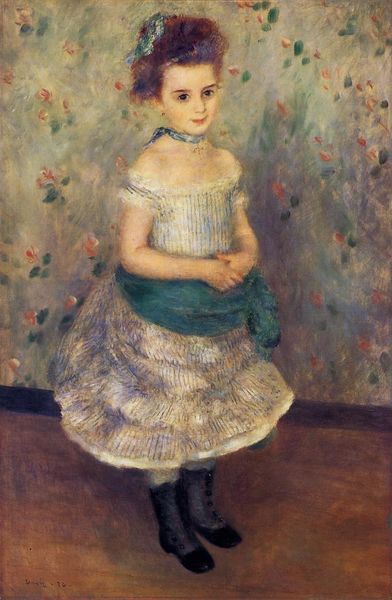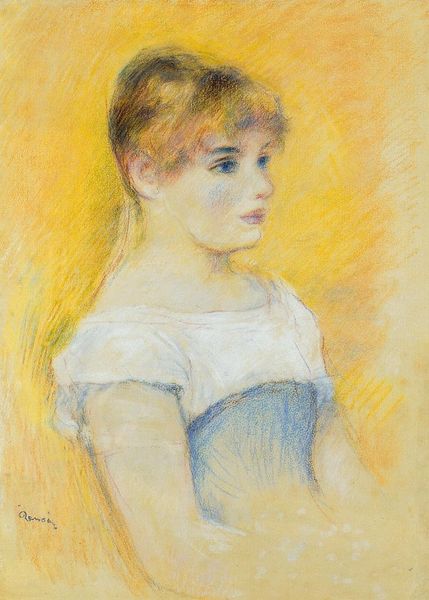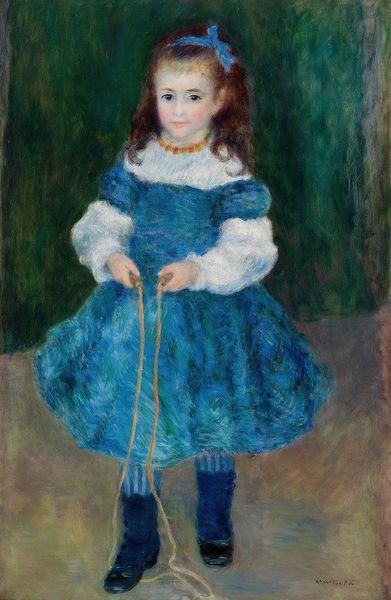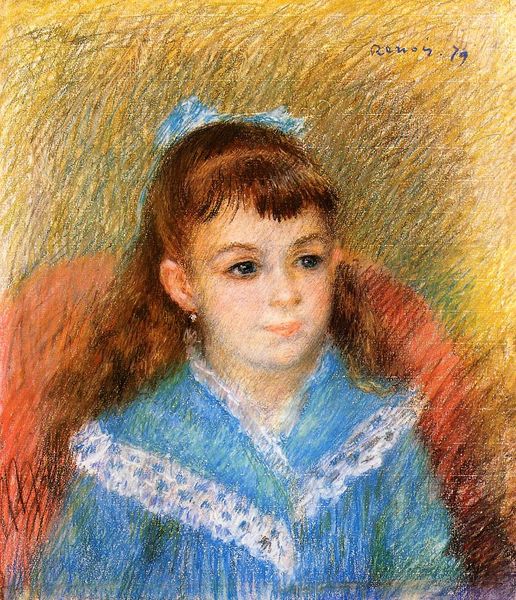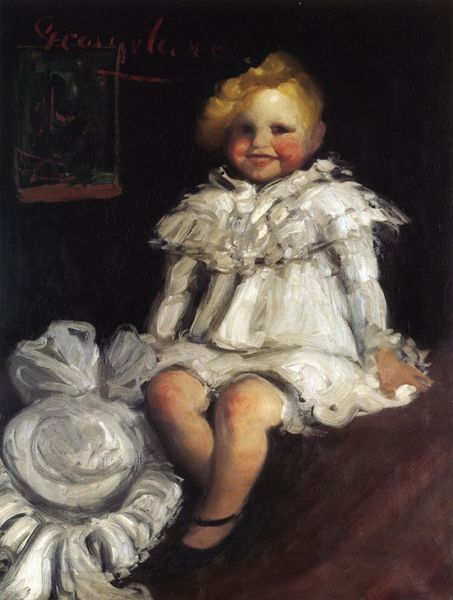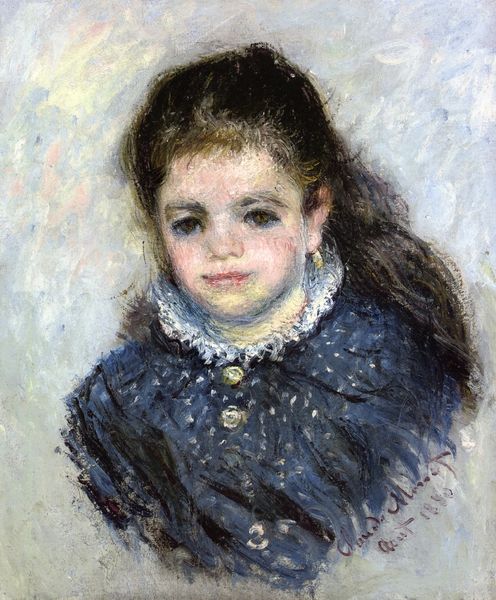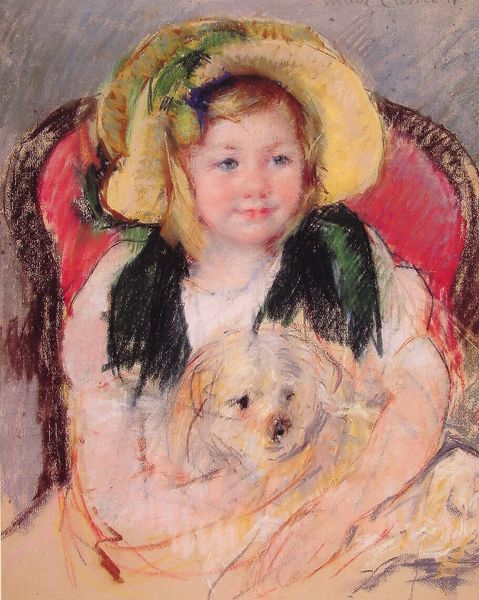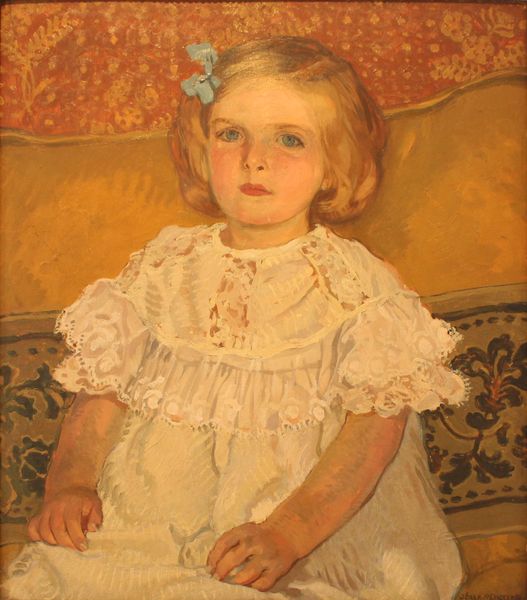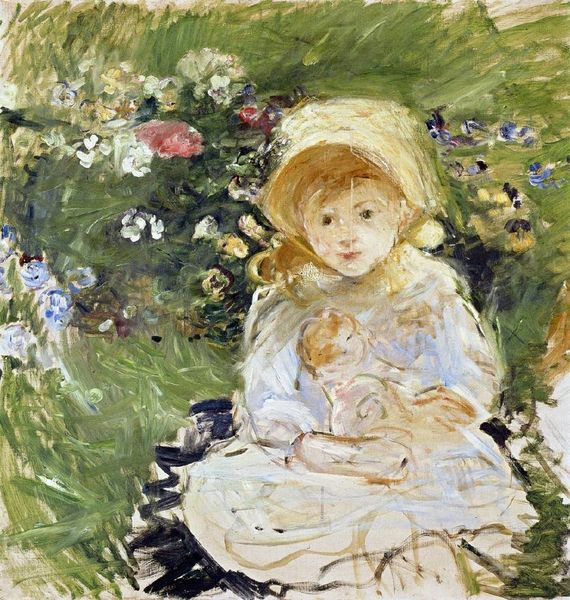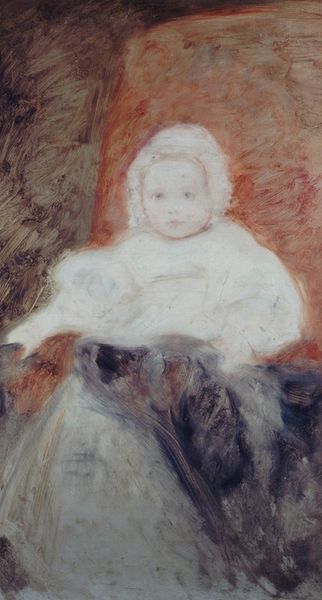
#
portrait
#
gouache
#
abstract painting
#
girl
#
possibly oil pastel
#
oil painting
#
fluid art
#
child
#
acrylic on canvas
#
underpainting
#
painting painterly
#
watercolour illustration
#
watercolor
Dimensions: 63.5 x 88.9 cm
Copyright: Public domain
Editor: So, this is Mary Cassatt’s "Elsie in a Blue Chair" from 1880. I find it so intriguing; there's something about the child's pose that feels very natural, but also a bit unsettling. What's your read on this piece, especially considering the period? Curator: I think you’ve hit upon something interesting there. Cassatt, though working within Impressionism, often challenged societal expectations. Depicting children wasn’t new, but showing them with this level of unidealized, almost weary, presence? That's quite different. It speaks to a move away from sentimental portrayals towards a more honest observation of childhood. Consider the rise of child labor, and new concepts of education and "raising" children during this time. How might those shifting roles and responsibilities for the younger generation affect how someone like Cassatt views them? Editor: That's fascinating. I hadn't really thought about the context of child labor influencing it. So you see it as a critique of the societal pressures on children at the time? Curator: Not necessarily a direct critique, but certainly a reflection of a changing perspective. Cassatt's choice to portray Elsie not as a cherubic ideal but as an individual with her own thoughts and perhaps weariness, could be a subtle commentary. It invites the viewer to consider the child’s agency, her position within the family, and ultimately, society at large. Is this 'adoration', or observation? What did you notice about the setting in relation to the figure? Editor: Now that you mention the agency, I can’t unsee the slightly rebellious look in her eye. That definitely shifts my perception. Thinking about Cassatt depicting such everyday subject matter as a key part of her legacy brings new insights. Curator: Precisely. And considering Cassatt's unique position as a female artist in a male-dominated art world adds layers of interpretation to her seemingly simple domestic scenes. She gives prominence to women, children and family life - subjects often disregarded in high art. So it's a social statement, cleverly disguised as something innocent. Editor: Thank you - that's really shifted how I understand Cassatt's place in the art world.
Comments
No comments
Be the first to comment and join the conversation on the ultimate creative platform.
